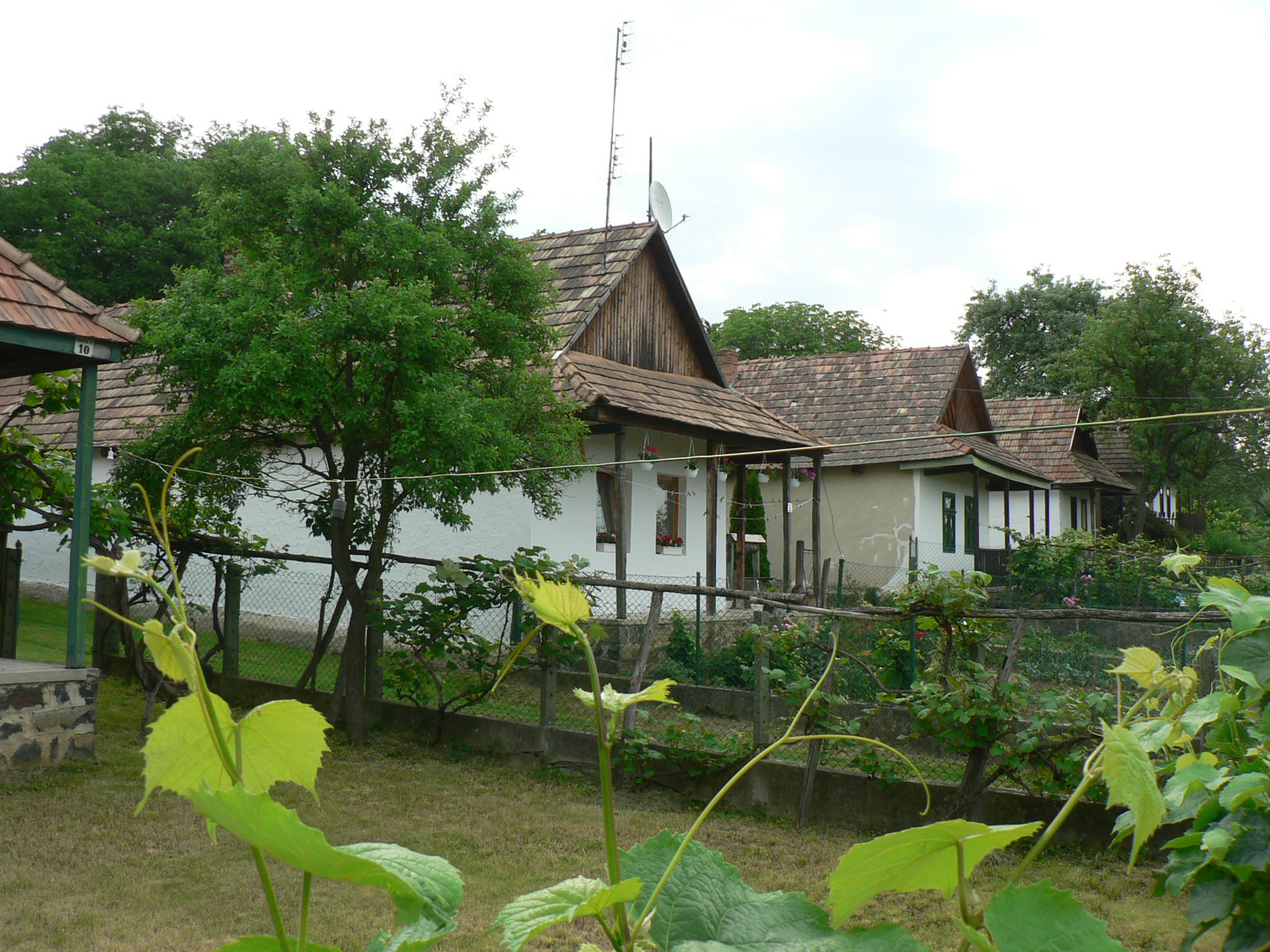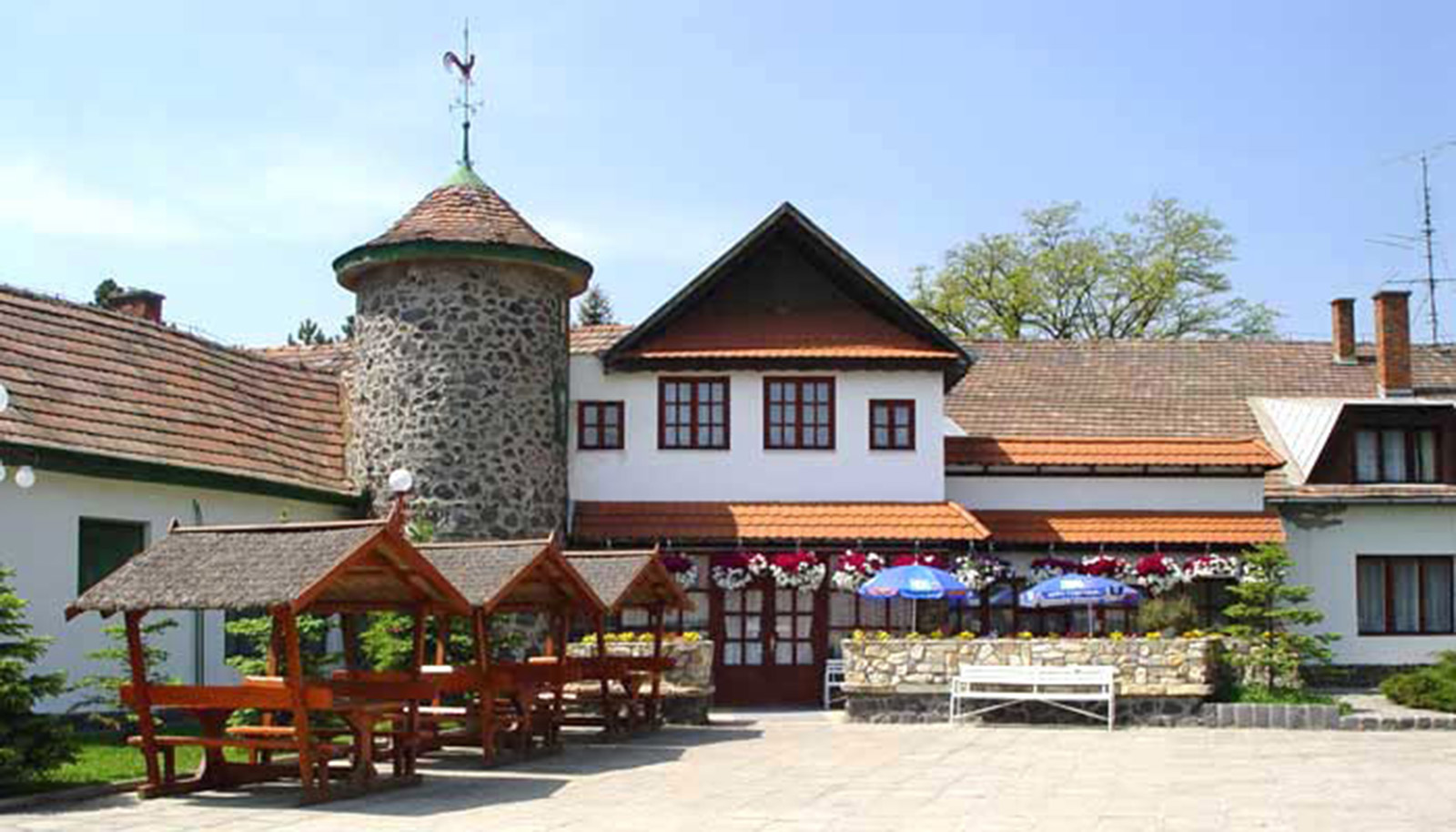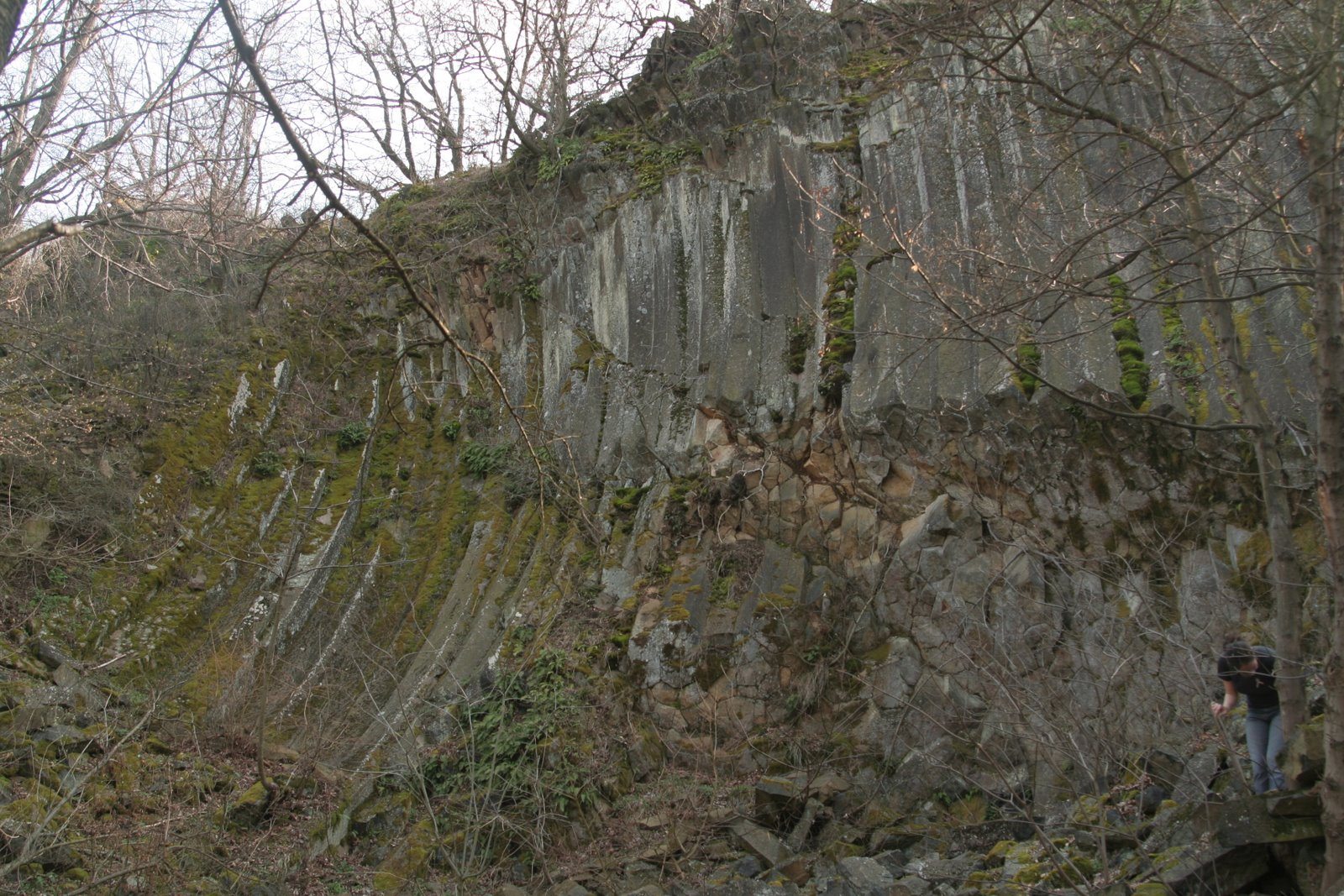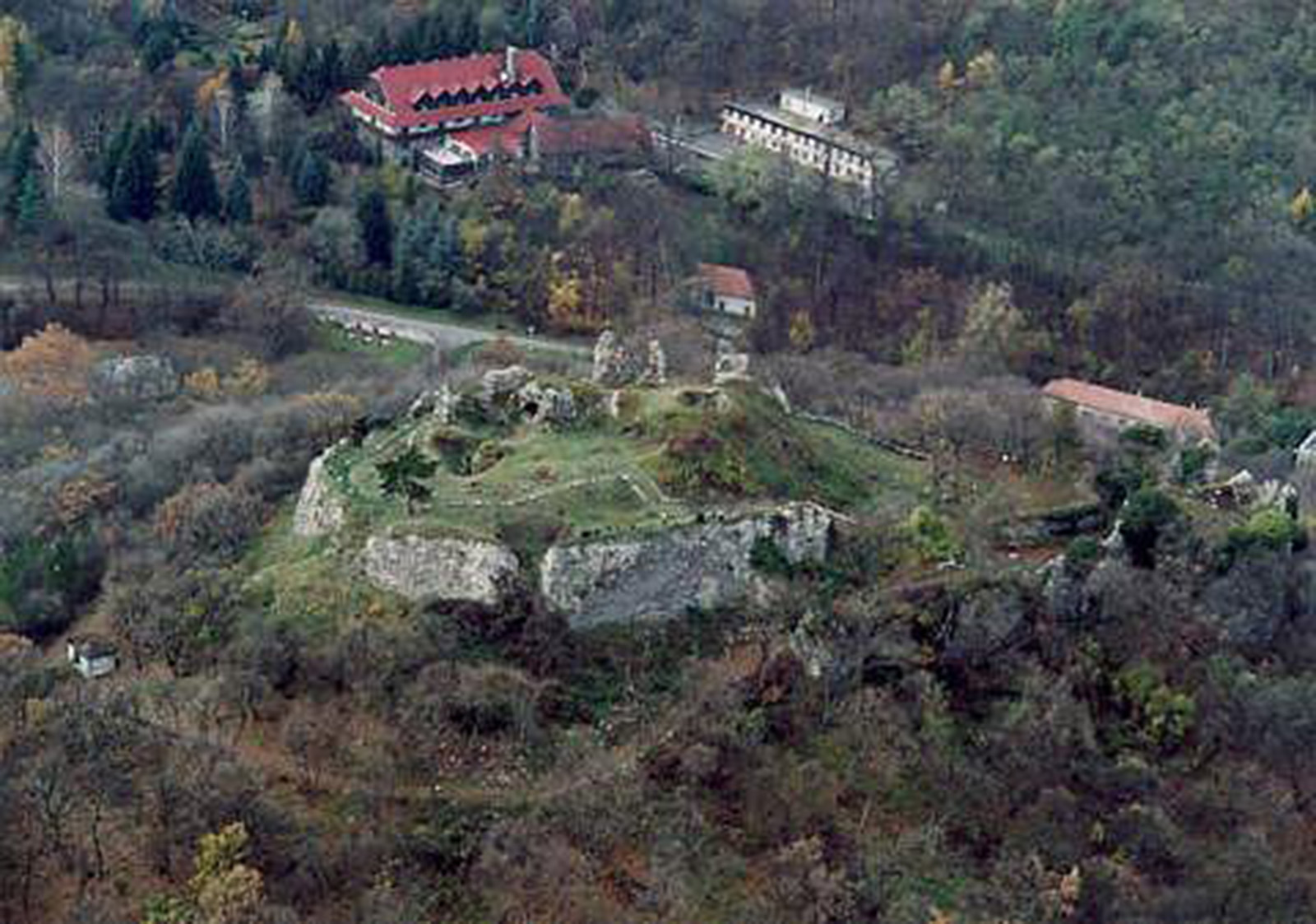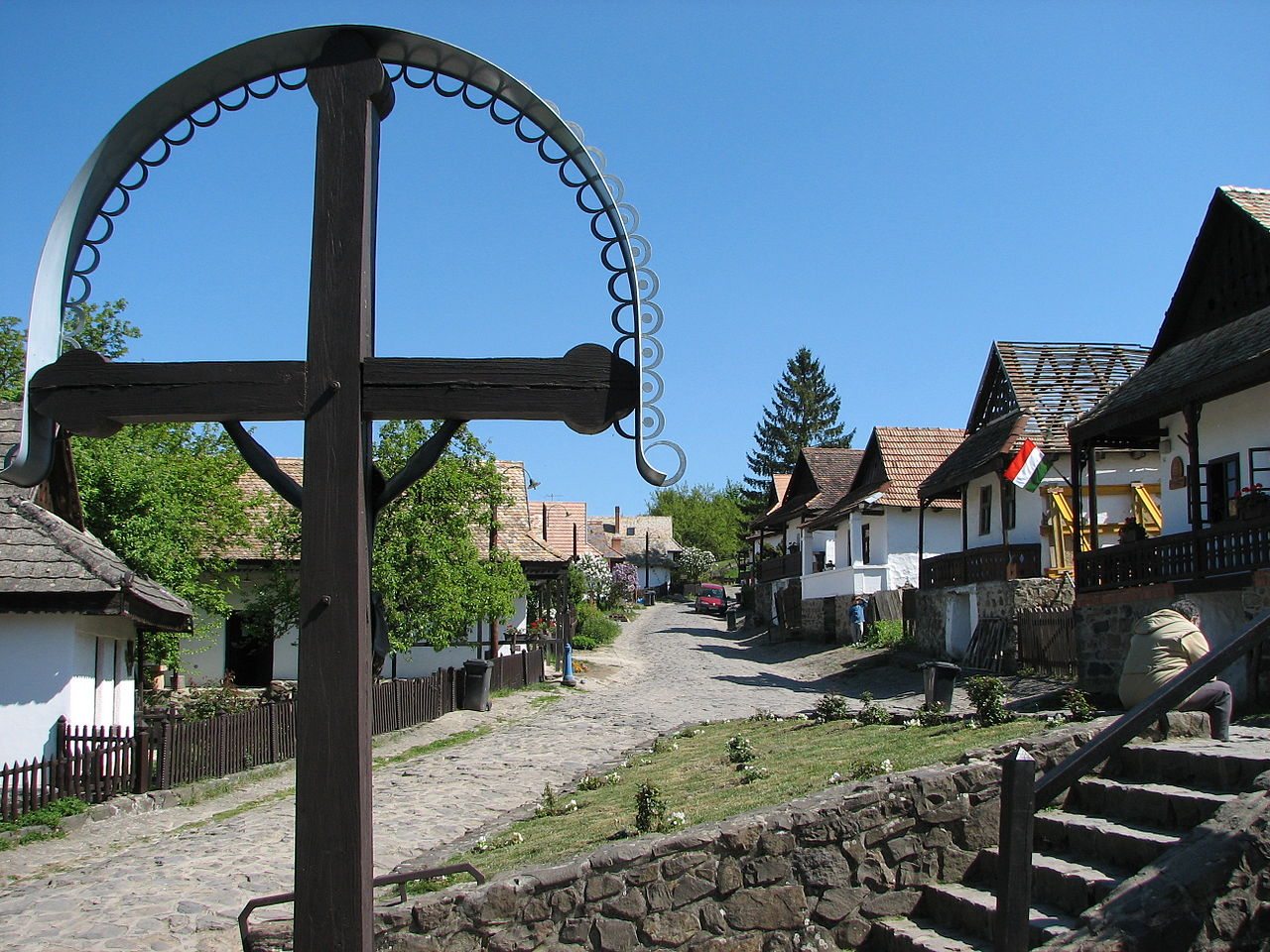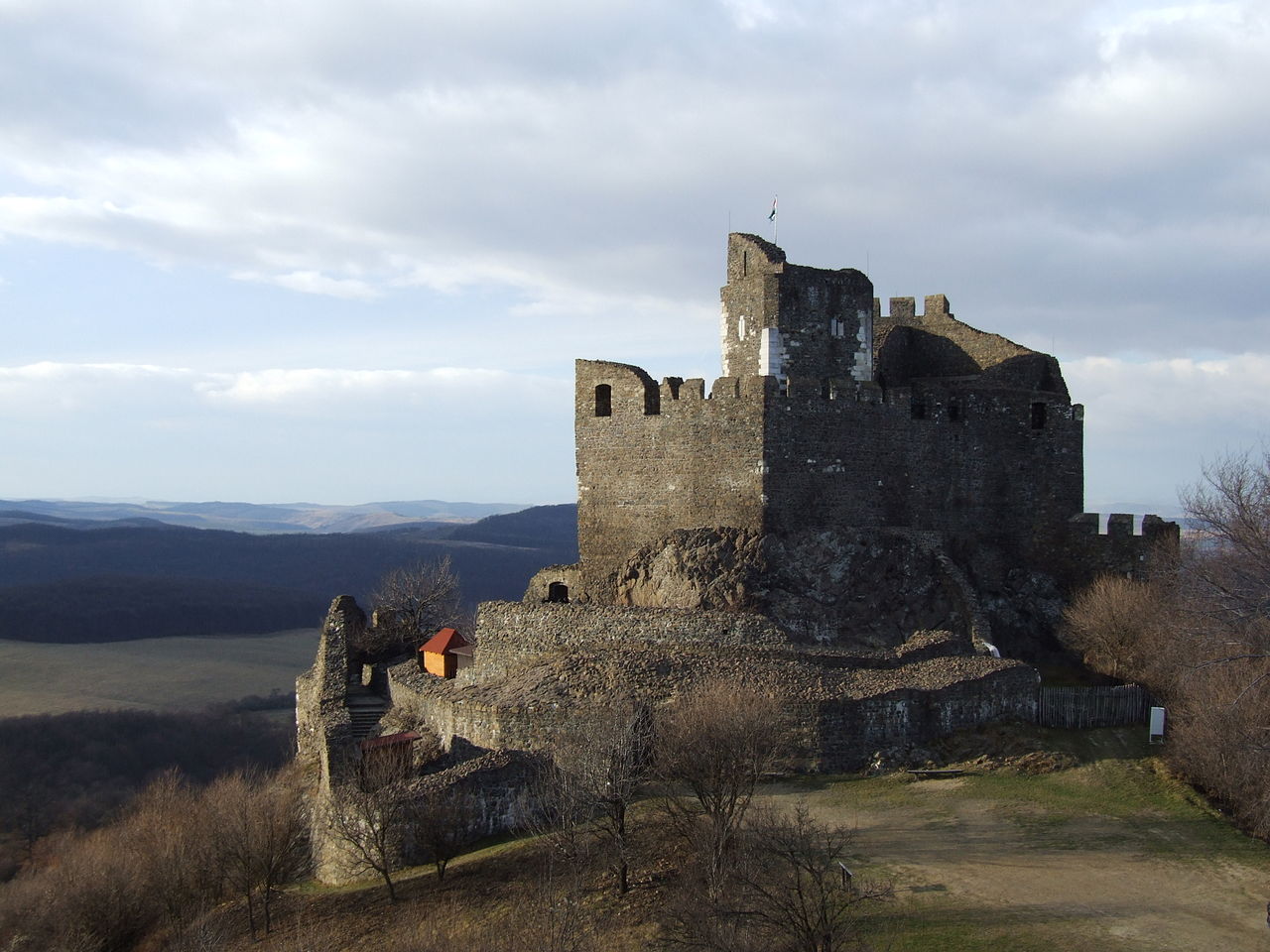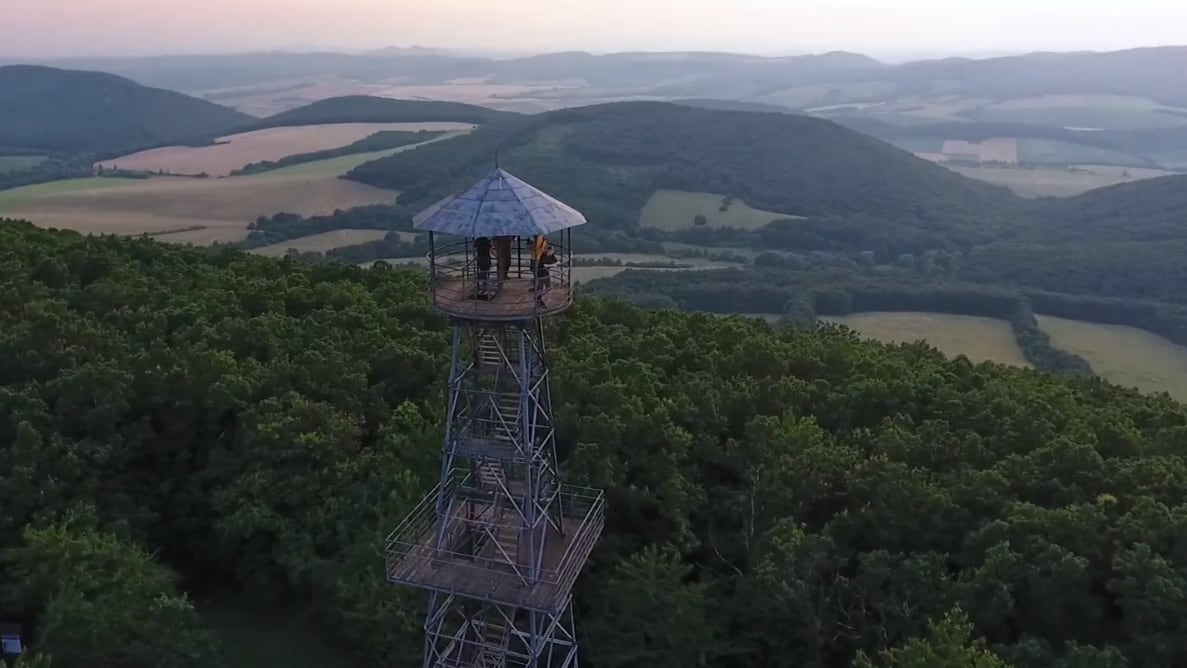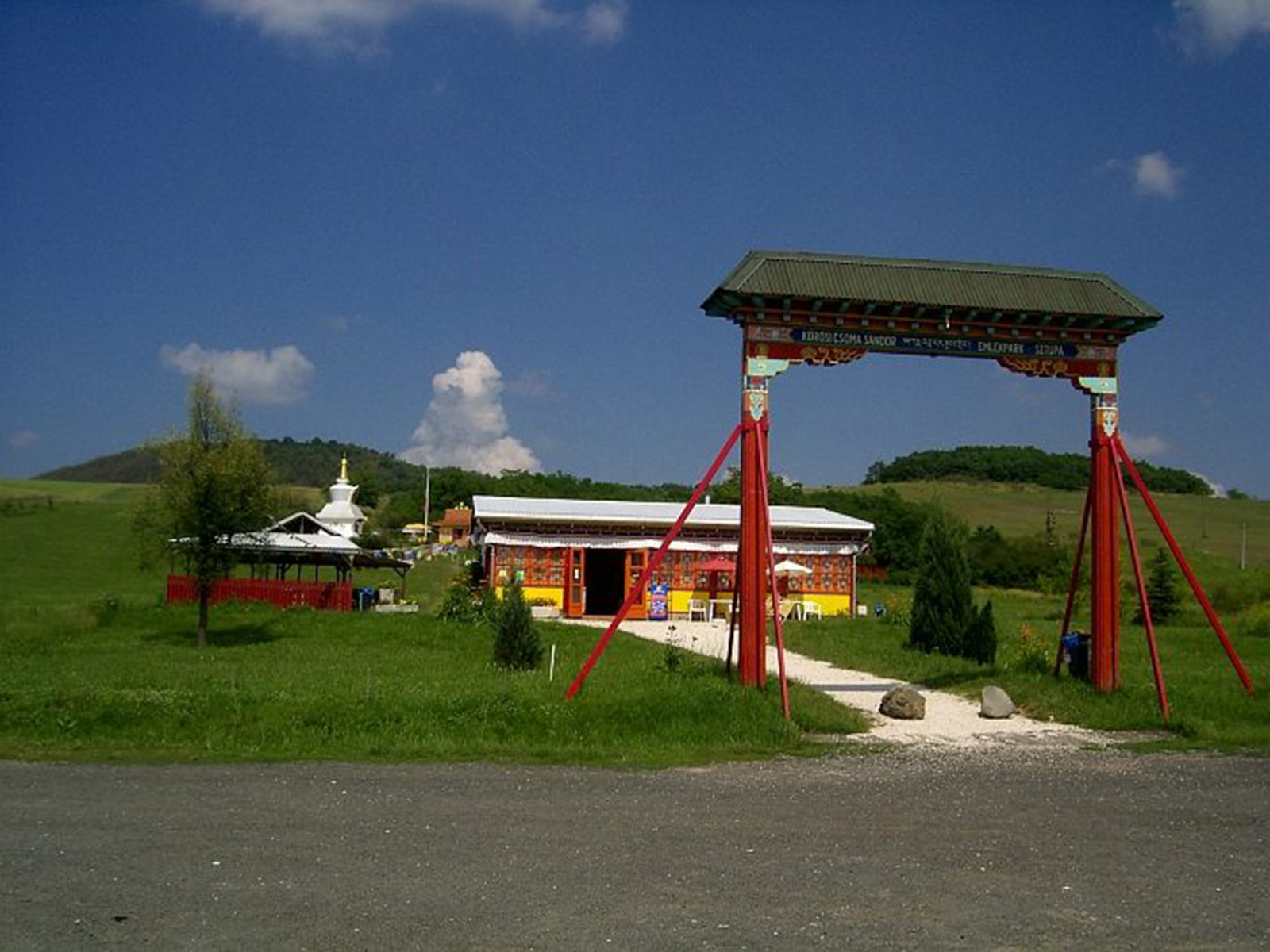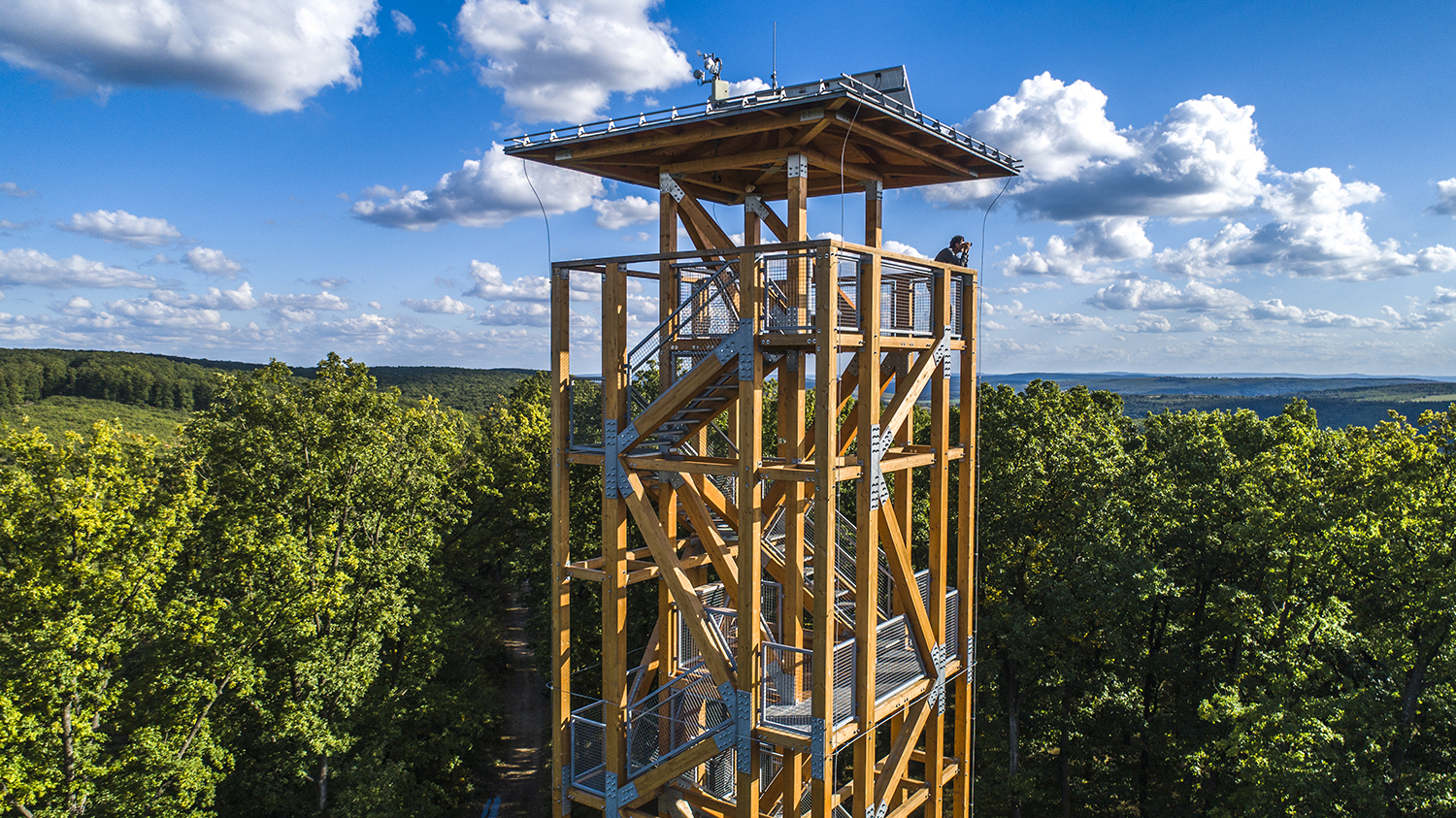Attractions
You find many different attractions right around Csobánkapuszta and in the broader area, approachable on foot, bike, or by car. They include beautiful natural spots and amazing vistas, historic, religious and cultural sites. Click on the link to see all the attractions in Google Maps.
Szandavár (Szanda Castle)
The settlement of Szanda was mentioned in an official paper dated 1214, and the castle atop the 529-metre hill next to the village was already standing in the 14th century. Today it is ruined, but you still get wonderful views from the top. It is a short hike from the villages of Szanda or Szandaváralja, and a little longer from our place. The easily recognisable hill with the ruin is well visible from the S.U.N. land.
View on Google Maps
The Stupa of Enlightenment, Becske
On a little hill in the village of Becske, near Szanda, stands a Buddhist stupa. Known as the Stupa of Enlightenment, it is the 7th official Buddhist stupa in Hungary. It was inaugurated by Tibetan spiritual leaders Serab Gyalcen Rinpoche és Lama Ole Nydahl in 2008. Hungary has a special relation with Tibetan Buddhism, and there is a big community of Buddhists in the country. The site is open for the public, and it involves a little climb to the hill. It is an ideal place for meditating with far-reaching beautiful views. There is also a retreat run by the Buddhist community, offering an open event every third weekend of the month.
View on Google Maps
Terény
Terény is a cute palóc village near Szanda, set in beautiful settings. Many of the locals still speak the palóc language and you can learn about their culture in the village museum (Faluház). Apart from this, there are other museums in the village as well, namely the Open-reel Tape Recorder Museum (Orsósmagnó Múzeum), the Mushroom Museum (Gombamúzeum), and the Hunnia Lace Museum (Csipkemúzeum).
View on Google Maps
Virágospuszta
A little over 3 kilometres to the east from our place you find a homestead turned into a hotel and restaurant, called Andezit Hotel, featuring a little farm of different animals including camels and alpacas. The main building also houses a collection of old radios. On the estate, there is also a Hunters’ Mansion, a little chapel and religious folk carvings.
For further information and contact, visit: andezithotel.hu
View on Google Maps
Andesite Columns, Bér
Near Virágospuszta and the village of Bér, on the northern side of Nagy hegy, andesite columns can be seen. Andesite columns are usually straight, but it is one of a few places where they are curved. The curious concave volcanic rock formation is a popular picnic spot for tourists.
View on Google Maps
Sasbérc Lookout
It was built around 1920 by Count Siegfried Poppenheim according to the plans of Munich based architect Franz Zell. It was used by hunting companies who stayed over night, but then the building got neglected. In 2002 the forestry company renovated it, and now the tower is open for visitors on the weekends. There are different hiking routes to the lookout, including directly from our place. It can also be reached from the nearby village of Buják.
View on Google Maps
Buják Castle
The core of the castle, the old tower, was probably built sometime after the Tatar invasion, but it is first mentioned in a document only in 1303. In later years, the castle was under Turkish occupation and remains of the walls of the mosque can still be seen. The castle was destroyed in the 17th century and it stands ruined since. The village where the castle stands is near the Sasbérc lookout, so you can combine visiting both places in one day.
View on Google Maps
Ethnographic Village, Hollókő
The village of Hollókő is the best known tourist attraction in the area, famed for its Palóc-style country houses. The Palóc are an ethnic Hungarian group with distinctive traditions. A part of the village is a protected area – an open ethnographic museum – and you also find a Village Museum, Post Museum, the House Of The Countryside, Doll Museum, The House Of The Weavers and the exhibition of woodcarver Ferenc Kelemen. There is also a ruined castle near the village. Hollókő, the castle and surrounding area are a UNESCO World Heritage Site.
View on Google Maps
Hollókő Castle
Located next to the ethnographic village, you find a fairly well preserved Hollókő Castle. The castle was first mentioned in records in 1310. The Ottomans captured the castle in 1552 and for the next 150 years, control alternated between Ottoman and Hungarian forces. At the end of the Ottoman era (1683) the castle was abandoned.
View on Google Maps
Hand of Fate / Palm of God Lookout
In the middle of the Cserhát, between Felsőtold and Hollókő, lies the charming Farkaskút Valley, and the designers chose this unspoilt area to build the Hand Lookout. From the viewing platform, you can see not only the surrounding valley but also the hills of the Cserhát. (photo/source: csodahelyek.hu)
View on Google Maps
Samsara Sound Bowl, Garáb
Located in the village of Garáb near Hollókő, it is the biggest sound bowl in the world offering an energising sound bath. It offers a vibrationally uplifting sound experience, enhanced by small singing bowls, gongs and other intuitive music therapy instruments, that supports the unity, calmness and peace of our being. Their vibrations permeate the sanctuary space and the participants. Each of our singing bowl practitioners uses a different method and instrument to colour these sessions. Most of them give the guests the opportunity to sit in the bowl during the sound bath, so that they can experience the power of the vibrations even more powerfully.
For further information and contact, visit: www.samsaragarab.hu
View on Google Maps
Tepke Lookout
There is a stunning view of the Mátra, the Cserhát Mountains, and the Börzsöny Mountains to the west from the lookout tower on the top of Tepke in the Eastern Cserhát. To the south, the landscape is dotted with the farmland of the Great Plain, while to the west is a mosaic of basins, farmlands and wooded hillsides hiding settlements. In the distance, the edges of the Buda and Visegrád Hills appear as barely perceptible outcrops. Of all the Cserhát hills, the Szanda is the easiest to find, with its distinctive double-branched peak extending well above its surroundings. Towards the north, the walls of Hollókő castle can also be seen among the hills. (photo/source: csodalatosmagyarorszag.hu)
View on Google Maps
Buddhist Memorial Park and the Peace Stupa, Tar
A Buddhist meditation centre and memorial park dedicated to Sándor Kőrösi Csoma, the Hungarian traveller who lived in Tibet and became a bodhisattva, the Peace Stupa was erected in 1992 and and subsequently consecrated by H.H. the Dalai Lama and blessed by representatives of other world religions. It was built to bring and stabilize peace, happiness, and wealth for all of the Earth’s inhabitants. It contains precious relic pills of the Buddha himself, relic pills of several Karmapas, and numerous precious relics of other enlightened masters. The Memorial Park and the Peace Stupa are open to visitors every day, free of charge.
View on Google Maps
Holy Spring and Hermit Caves, Mátraverebély-Szentkút
Not far from the Buddhist retreat, you find a spring believed to be a site of a miracle: its water, according to legend, cured a mute peasant boy. The spring is officially a holy place of pilgrimage since 1252. Hermits lived in the area in man-made caves, and a baroque church was built in 1763 followed by a monastery. Pilgrims still gather at the place at certain times. You can visit some of the sights and the area offers a few pleasant hiking trails. (photo/source: geocaching.hu)
View on Google Maps
Nagy Lookout, Magyarnándor
Located in Magyarnándor, the small windows of the 20-metre-high building look mainly out to the east. From here we can see the eastern slopes of the Cserhát, including the characteristic peaks of Szandavár hill, the lines of the Bikamáj and Sirató hills opposite, the houses of Magyarnándor and the water mirror of the Rézparti reservoir, which from here appears to be a mere speck, and the peaks of the Mátra and Karancs in the distance. (photo/source: www.turistamagazin.hu)
View on Google Maps
Prónay Lookout, Alsópetény
128 steps lead up to the roof terrace of the Prónay Lookout built on top of the Romhányi hill near Alsópetény. From the terrace, 23 metres above ground level, you can enjoy a panoramic view of the Börzsöny in the west-northwest, the Selmec Mountains with the peak of Szitnya in the north, Szandavár in the east, Karancs and the Mátra in the distance, the slopes of the Gödöllő hills in the south, and the peaks of Naszály, Pilis and Visegrád in the southwest. (photo/source: csodalatosmagyarorszag.hu)
View on Google Maps
Csővár Castle
The castle of Csővár was built after the Mongolian invasion of 1241-42, and it was mentioned as “Castrum nostrum Cheewar” in the 14th century. Today it is quite ruined, but it offers nice views of the village of Csővár and the surroundings.
View on Google Maps
Bánk
The village of Bánk is known for its lake and the Bánkitó Festival held every summer. You can fish in the lake (permit needed) and there is also a public beach. You find several restaurants and many accommodation options in the village which get very busy at festival times, but at other times are more relaxed.
For further information about the festival, visit: bankitofesztival.hu
View on Google Maps
Nógrád Castle
Located not far from Bánk, the castle of Nógrád (Novigrad, or ‘new castle’) is Hungary’s oldest irregularly shaped stone castle with an inner tower, crowning a plateau that rises sixty metres from the surrounding countryside. During a summer storm in 1685, lightning struck the high old tower of the inner castle, blowing up the gunpowder stored there. The huge explosion completely destroyed the inner castle, rendering it virtually defenceless. Its military significance was lost forever, its walls consumed by the merciless weather and the demolition hands of the local population.
View on Google Maps



